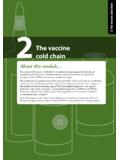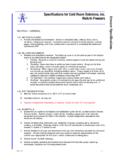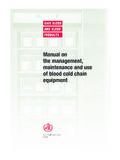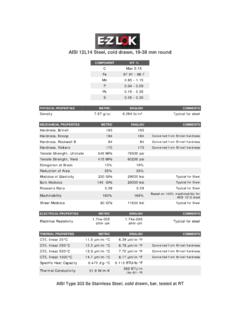Transcription of Fast Facts - Centers for Disease Control and …
1 Workers who are exposed to extreme cold or work in cold environments may be at risk of cold stress. Extremely cold or wet weather is a dangerous situation that can cause occupational illness and injuries such as hypothermia, frostbite, trench foot, and condition in which the body uses up its stored energy and can no longer produce heat. Often occurs after prolonged exposure to cold temperature. Early symptoms Shivering Fatigue Loss of coordination Confusion and disorientationLate symptoms No shivering Blue skin Dilated pupils Slowed pulse and breathing Loss of consciousnessFirst Aid Request immediate medical assistance. Move the victim into a warm room or shelter.
2 Remove wet clothing. Warm the center of their body first chest, neck, head, and groin using an electric blanket; or use skin-to-skin contact under loose, dry layers of blankets, clothing, or towels. If conscious, warm beverages may help increase the body temperature. Do not give alcohol. Once temperature has increased keep them dry and wrapped in a warm blanket, including the head and neck. If no pulse, begin injury to the body that is caused by freezing, which most often affects the nose, ears, cheeks, chin, fingers, or Reduced blood flow to hands and feet Numbness Aching Tingling or stinging Bluish or pale, waxy skinFirst Aid Get into a warm room as soon as possible.
3 Unless necessary, do not walk on frostbitten feet or toes. Immerse the affected area in warm (not hot) water, or warm the affected area using body heat. Do not use a heating pad, fireplace, or radiator for warming. Do not massage the frostbitten area; doing so may cause more FactsC o l d S t r e s sProtecting Yourself fromTrench FootAn injury of the feet resulting from prolonged exposure to wet and cold conditions that can occur at temperatures as high as 60 F if the feet are constantly formed by damaged small blood vessels in the skin, caused by the repeated exposure of skin to temperatures just above freezing to as high as 60 Yourself Monitor your physical condition and that of your coworkers.
4 Wear appropriate clothing. Wear several layers of loose clothing for insulation. Tight clothing reduces blood circulation to the extremities. Be aware that some clothing may restrict movement resulting in a hazardous situation. Protect the ears, face, hands and feet in extremely cold or wet weather. Boots should be waterproof and insulated. Wear a hat to reduce the loss of body heat from your head. Move into warm locations during breaks; limit the amount of time outside. Carry extra socks, gloves, hats, jacket, blankets, a change of clothes and a thermos of hot liquid. Include chemical hot packs in your first aid kit. Avoid touching cold metal surfaces with bare Reddening of the skin Numbness Leg cramps Swelling Tingling pain Blisters or ulcers Bleeding under the skin Gangrene (foot may turn dark purple, blue, or gray)First Aid Remove shoes/boots and wet socks.
5 Dry feet. Avoid walking on feet, as this may cause tissue Redness Itching Possible blistering Inflammation Possible ulceration in severe casesFirst Aid Avoid scratching. Slowly warm the skin. Use corticosteroid creams to relieve itching and swelling Keep blisters and ulcers clean and OF HEALTH AND HUMAN SERVICESC enters for Disease Control and PreventionNational Institute for Occupational Safety and (NIOSH) Publication No. 2010 115 Telephone: 1 800 CDC INFOTTY: 1 888 232 6348E-mail: healthier people


















